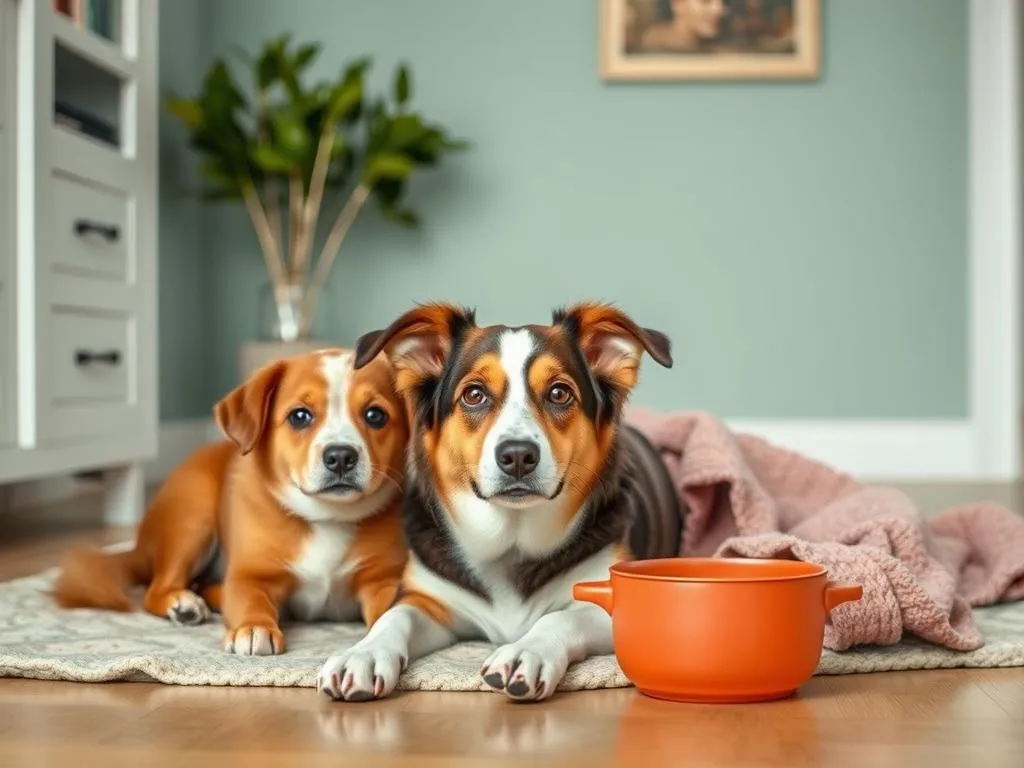
Having multiple dogs can be a rewarding experience, bringing joy and companionship to your home. However, managing a multi-dog household requires careful planning and consideration to ensure harmony and well-being for both your pets and yourself. In this guide, we will explore the dynamics of living with multiple dogs, preparation tips, training strategies, and how to create a peaceful environment where all your furry friends can thrive.
Understanding the Dynamics of a Multi-Dog Household
Benefits of Having Multiple Dogs
Owning more than one dog can provide several advantages:
- Companionship for Dogs: Dogs are social animals, and having a buddy can help alleviate loneliness, especially when you are not home.
- Enhanced Socialization Skills: Dogs learn from each other. They can develop better social skills by interacting with their peers, which can lead to better behavior overall.
- Reduced Separation Anxiety: When dogs have company, they may feel less anxious when left alone, leading to a more relaxed atmosphere.
Challenges of a Multi-Dog Household
Despite the advantages, there are also challenges to consider:
- Competition for Resources: Multiple dogs can lead to competition over food, toys, and even your attention. This can cause tension and conflict if not managed properly.
- Potential for Behavioral Issues: Issues like aggression or jealousy can arise, particularly if dogs feel threatened or if resources are scarce.
- Time Commitment: More dogs mean more training, socializing, and attention. It’s essential to dedicate time to each pet to ensure they feel loved and valued.
Preparing Your Home for Multiple Dogs
Space Considerations
Before welcoming multiple dogs into your home, assess your living space:
- Ensure you have enough room for each dog to move around comfortably.
- Designate specific areas for each dog, such as separate feeding zones and resting spaces, to minimize competition and promote peace.
Safety Measures
Creating a safe environment is crucial:
- Dog-Proofing: Remove hazards like cords, toxic plants, and fragile items. Ensure that your furniture is dog-friendly, avoiding anything that can be easily knocked over.
- Establishing a Safe Outdoor Space: If you have a yard, ensure it’s securely fenced. If not, consider using gates to create a safe area where your dogs can play without risk of running off.
Supplies and Resources
Having the right supplies can help you manage your dogs effectively:
- Invest in multiple food bowls, beds, and toys to prevent fighting over resources.
- Organize supplies in a way that makes it easy for you to access what you need without creating chaos. Use bins or shelves to keep everything tidy.
Introducing New Dogs to the Household
Choosing the Right Dog
When considering a new addition to your multi-dog household, compatibility is key:
- Look for a dog whose temperament aligns with your current pets. Consider factors such as breed, age, and energy level to ensure a good match.
The Introduction Process
Introducing a new dog requires a thoughtful approach:
- Initial Meeting: Arrange a neutral meeting place, such as a park, where both dogs can interact without territorial instincts kicking in.
- Supervised Interaction: Allow the dogs to meet while on leashes. Pay attention to their body language for signs of stress or aggression.
- Gradual Integration: Once they seem comfortable, introduce the new dog to your home. Keep initial interactions short and supervised.
Establishing a Routine
A consistent routine can help all dogs feel secure:
- Set regular feeding times and stick to a daily exercise schedule. This helps prevent competition and ensures that each dog receives enough attention.
Training Strategies for Multi-Dog Households
Basic Commands and Obedience Training
Training is vital for maintaining order in your multi-dog household:
- Teach each dog basic commands like “sit,” “stay,” and “come.” Consistent training helps establish boundaries and reinforces good behavior.
- Consider group training sessions for your dogs, but also dedicate time for individual training to address specific needs.
Socialization Techniques
Encouraging positive interactions among your dogs is essential:
- Organize playdates with other dogs to help your pets learn how to socialize appropriately.
- Monitor playtime to ensure that no dog feels overwhelmed or bullied. Intervene if play becomes too rough.
Addressing Behavioral Issues
Be proactive in identifying and correcting behavioral problems:
- Common issues include resource guarding and excessive barking. For resource guarding, ensure each dog has their own space and resources.
- If conflicts arise, separate the dogs and allow them to cool down before reintroducing them.
Health and Wellness Considerations
Regular Veterinary Care
Maintaining your dogs’ health is paramount:
- Schedule regular check-ups for all dogs and keep up with vaccinations and parasite prevention.
- Monitor each dog’s health closely, as multiple pets can make it challenging to spot issues early.
Nutrition and Diet Management
Managing dietary needs in a multi-dog household can be tricky:
- Establish feeding schedules to prevent competition. Consider using separate areas or feeding stations for each dog.
- Be aware of each dog’s dietary restrictions or allergies, and adjust their meals accordingly.
Exercise and Mental Stimulation
A well-exercised dog is generally a happier dog:
- Create a balanced exercise routine that accommodates all dogs. This could include walks, playtime, and interactive games.
- Engage your dogs with mental stimulation activities, such as puzzle toys or training games, to keep their minds active.
Creating Harmony in a Multi-Dog Household
Establishing a Pack Structure
A clear pack structure can promote harmony:
- Provide leadership and establish boundaries. Dogs thrive in environments where they understand their role within the household.
- Use positive reinforcement to encourage good behavior and reinforce your role as their leader.
Individual Attention and Bonding
Each dog requires individual attention to foster strong bonds:
- Schedule one-on-one time with each dog, engaging in activities they enjoy, whether it’s a walk, cuddle session, or a game.
- This approach helps each dog feel valued and loved, reducing competition for your attention.
Conflict Resolution
Handling disagreements calmly is essential:
- If conflicts arise between dogs, separate them immediately to prevent escalation. Allow them to calm down before reintroducing them.
- Utilize techniques like redirection or calming signals to manage aggressive behavior. Consistency in your responses helps reinforce desired behavior.
Frequently Asked Questions
How do I manage feeding time with multiple dogs?
Establish a routine and use separate feeding stations for each dog. Monitor their eating to prevent resource guarding and ensure everyone gets their share.
What should I do if my dogs don’t get along?
If your dogs struggle to get along, consider consulting a professional trainer or behaviorist. Gradually reintroducing them in a controlled environment can help.
How can I ensure each dog gets enough attention?
Schedule individual playtime and training sessions for each dog. This helps reinforce your bond and reduces feelings of jealousy among them.
Can I train multiple dogs at once, or should I train them separately?
You can train multiple dogs together, focusing on group commands. However, individual training sessions are crucial for addressing specific behavioral issues or commands.
Conclusion
Managing a multi-dog household can be a fulfilling yet challenging endeavor. By understanding the dynamics of multiple dogs, preparing your home, and implementing effective training and care strategies, you can create a harmonious environment where all your pets thrive. Embrace the joy that comes with having multiple furry companions, and remember that with patience and dedication, you can build a loving home for everyone.









